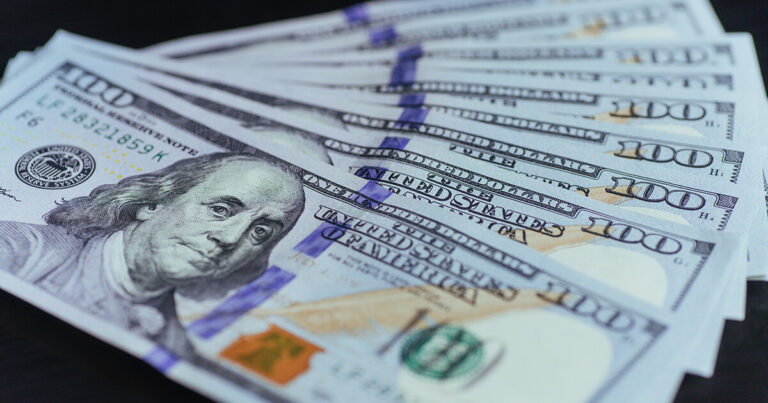Yet another week of action-packed Forex market ups and downs of the G7 currencies ended predominantly affected by two main fundamentals;
the China-US conflicts and COVID 19 effects, among others.
Also, successful, coronavirus human early-stage trials generated positive global sentiments.
Many countries now shift focus to economic recovery plans as they emerge from COVID 19 locks down.
Join me as we dwell more profoundly in the week’s Forex market analysis.
Forex fundamental signals
The following fundamentals strongly affected the performance of G7 currencies in the week.
The US-China conflicts
The conflicts between these two big economic nations continue. On Wednesday, the White House released a broad-based attack on china’s human rights violations, military buildup, and disinformation campaigns.
On Friday, China issued a retaliatory warning against America for any action or involvement concerning Hong Kong national security legislation.
As the world is preoccupied with coronavirus pandemic china is actively pushing through legislation that would outlaw “treason, secession, sedition and subversion” in Hong Kong.
COVID 10 pandemic
The much-awaited Moderna results on coronavirus vaccine early-stage clinical trials on humans proved successful.
The biotechnological company released the results on Monday, 18th May 2020.
The results generated global hope for protection against the coronavirus, but an effective vaccine may take up to 18 months to be developed.
COVID 19 has no formal treatment yet and has affected over 5 million people globally, with over nearly half a million fatalities.
According to WHO, more than 100 vaccines have been developed, and eight are on human trials.
The surge in oil demand
Oil is one of the Forex fundamental signals that are closely monitored by Forex investors. Over the week, oil had a significant impact on g7 currency trading.
Many countries have eased their lockdown measures on coronavirus pandemic. There is increased traffic in the streets, and some factories have resumed production.
As a result, there was a surge in oil demand, which pushed prices upwards to trade over $33 per barrel early in the week.
However, the China-US tension suppressed oil prices towards the oil price surge towards the end of the week.
Commodity based economies like Canada are strongly affected by these types of Forex fundamental signals.
G7currency Forex Market Analysis
Table: the g7 currency review summary.
| Currency pair | 18th May | 24th May | Average | Percentage change | Remarks |
| USD | 99.681 | 99.888 | 99.495 | 0.544 | Decline |
| EUR/USD | 1.0913 | 1.0902 | 1.0934 | 0.7951 | Decline |
| GBP/USD | 1.2199 | 1.2166 | 1.2215 | 0.4955 | Decline |
| USD/JPY | 107.35 | 107.63 | 107.56 | 0.55 | Gain |
| USD/CAD | 1.3936 | 1.3998 | 1.3946 | 0.8079 | Gain |
| AUD/USD | 0.6524 | 0,6536 | 0.6552 | 0.18 | Gain |
| USD/CHF | 0.9712 | 0.9711 | 0.9699 | 0.0515 | Gain |
| NZD/USD | 0.6041 | 0.6109 | 0.6097 | 2.9665 | Gain |
USD
The dollar started the week on a nosedive trend amid the positive global sentiments and bad economic data.
However, it recovered and gained strength on Thursday and Friday on reaction to continued China-US tensions flare-ups. Overall the US dollar shed off 0.544%.
According to Forex market analysis, the American dollar traded below 100.00 points in the week.
The progress in the search for coronavirus vaccine saw the dollar drift lower as the risk market rekindled its appetite for riskier g7 currencies.
The positive global sentiment catalyzed Forex market investors away from the safe-haven currencies to the risk market.
Also, early in the week, bad economic data and risk of 2nd wave coronavirus infections pressured the dollar downwards.
The China-US tension saw the dollar recover towards the end of the week to close at 99.888.
The US dollar index that tracks the dollar against the g7 currencies averaged at 99.495.
EUR/USD slight gain
At the start of the week, the euro rose sharply against other g7currencies as the France-German proposal was being released.
German chancellor Angela Merkel and France President Emanuel Macron jointly proposed 500 billion euros to finance the economic recovery stimulus plan for its member states ravaged by COVID 19.
The euro gained sharply against the dollar on the support of coronavirus vaccine positive global sentiment and the proposed France-Germany economic stimulus.
Despite the bullish run between Monday and Wednesday, it failed to reach the 1.1000 mark.
The Europe zone economic recovery efforts from the COVID 19 effect are another important fundamental that affected the Forex market movement of the EUR/USD currency pair.
However, the euro lost its gains on Thursday and Friday in response to the simmering China-US tensions. Overall the euro was a net loser against the American dollar.
The European union currency was affected by the Moderna report, China-US tensions, unlimited economic stimulus package announced by the US, and adverse financial data in European member states.
GBP/USD sees red
The Great Britain Sterling pound started the week on a positive note riding high on the positive global sentiments for two days.
However, Forex market analysis shows that things went downwards from Wednesday to Friday in response to the simmering China-US tensions.
The sterling lost significantly in the last three days to register an overall net loss of 0.4955% over the week.
The pound was also battered by COVID 19 effects, bad economic data, low-interest rates, and Brexit’s lack of progress.
Also, Forex market analysis indicated that Britain’s extended lockdown measures weighed negatively against the sterling pound.
USD/JPY
The American dollar traded more robust against the Japanese Yen in the week.
The USD/JPY Forex market movement was boosted by the positive global sentiments and the China-US tension.
Both of these currencies are safety currencies and sensitive to risk appetite, but the Yen is considered safer.
This g7 currency pair started the week at 107.35 and closed at107.63, having gained significant 0.55%.
On Wednesday, the Yen traded more reliable support by the Japanese economic recovery stimulus.
There was an additional Forex fundamental signals from the China-US tensions, the United States of America senate passed a bill that could bar and delist Chinese companies from the United States of America stock exchanges.
Japan posted reduced GDP by 3.4%, further damaging the Yen.
USD/CHF strong rebound
The Swiss franc fluctuated greatly to trade on a low of 0.9638 and a high of 0.9761 in the week.
A closer look at the week’s Forex market analysis indicates no significant price change between the start of the week and the close of the week.
Forex market analysis indicates that on Monday and Wednesday, Swiss franc gained strength supported by the global sentiments and rise in oil prices.
In sharp contrast, the dollar had a significant advantage in the escalating China-US tensions in the USD/CHF Forex market movement.
USD/CAD mixed reactions
Crude oil Forex fundamental signals boosted the gains in the Canadian dollar against the American dollar.
The oil prices are still low; thus, the Canadian dollar is still vulnerable.
Investors also factored in Negative economic reports and China-US tensions in Forex market analysis to shy away from the Canadian dollar on risk aversion measures.
American dollar registered 0.8079% overall net gain in the week.
Furthermore, the USD/CAD Forex market movement was primarily affected by oil prices, positive global sentiment on coronavirus vaccine, and China-US tensions.
The Canadian dollar traded positively on Monday and Wednesday, responding to positive global sentiments and a surge in oil prices.
On the negative side, the simmering China-US tensions eroded its value on Thursday and Friday.
AUD/USD stronger
The Australian dollar started the week on a positive and gained sharply to reach a high of 0.6603 on Wednesday.
Forex fundamental signals suggest that the AUD/USD Forex market movement was positively affected by positive global sentiments, economic recovery stimulus packages, and an increase in oil prices.
However, the downwards movement of the currency pair witnessed on Thursday and Friday resulted from the increasing China-US conflicts and COVID 19 effects.
On the warpath, Australia took sides on China-US conflict.
Australia voiced their support for China to be held accountable on the global coronavirus pandemic, and also condemned China’s intentions to undermine the autonomy of Hong Kong.
China responded immediately by increasing tariffs on import Barley and suspending beef imports from Australia. This resulted in negative impacts on the Australian dollar.
NZD/USD substantial gain
Forex market analysis indicates that the New Zealand dollar gained tremendously against the American dollar to close at 2.9665% stronger.
The positive global sentiments on coronavirus vaccine were the primary market movement driver.
Economic stimulus plans and continued easing on lockdown measures are the other Forex market drivers that boosted the New Zealand dollar.
However, in the last two days of the week, the New Zealand dollar lost strength on risk aversions against the increasing China-US tensions.
Despite the struggles in the previous two days, the New Zealand dollar emerged as the overall influential week’s gainer.
Conclusion
Australia and New Zealand risk markets gained against the US dollar, whereas the American dollar gained strength versus the other g7 currencies.
Global positive sentiments weakened the American dollar, while the simmering China-US conflicts boosted the American dollar.
Going forward, Forex market analysis suggests that Forex market performance of the g7 currencies will be affected primarily by China-US conflicts, COVID 19 2nd wave infections, crude oil prices, and post COVID 19 economic recovery efforts.







